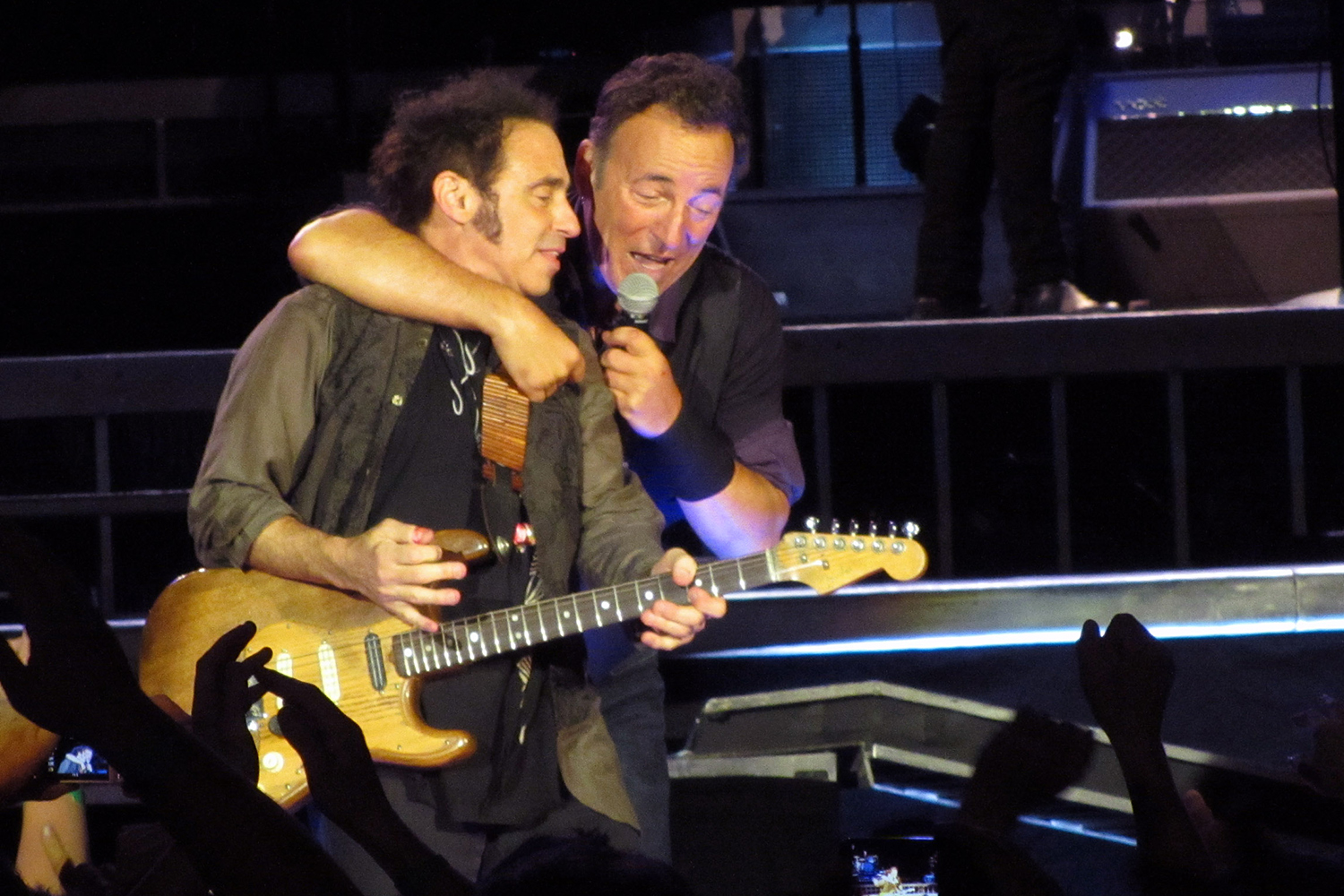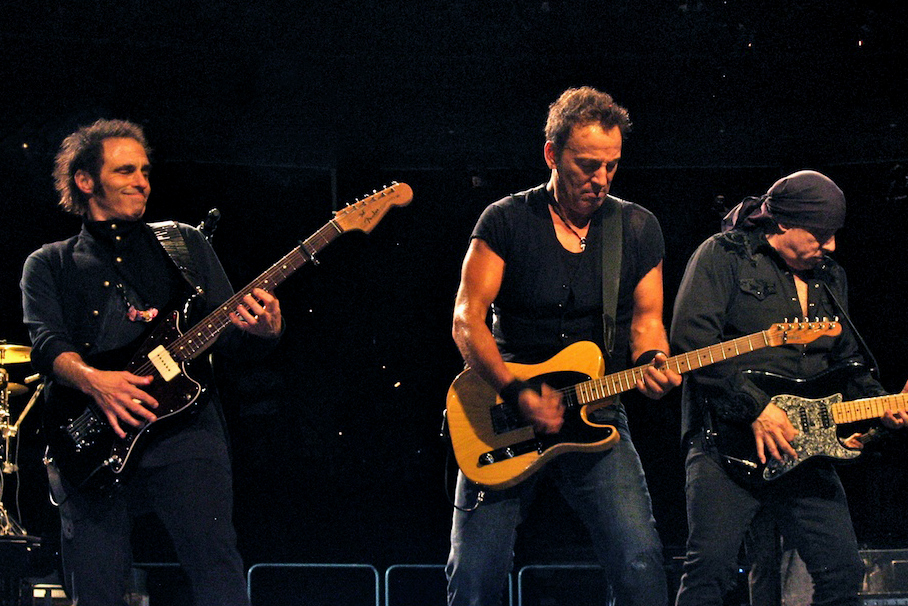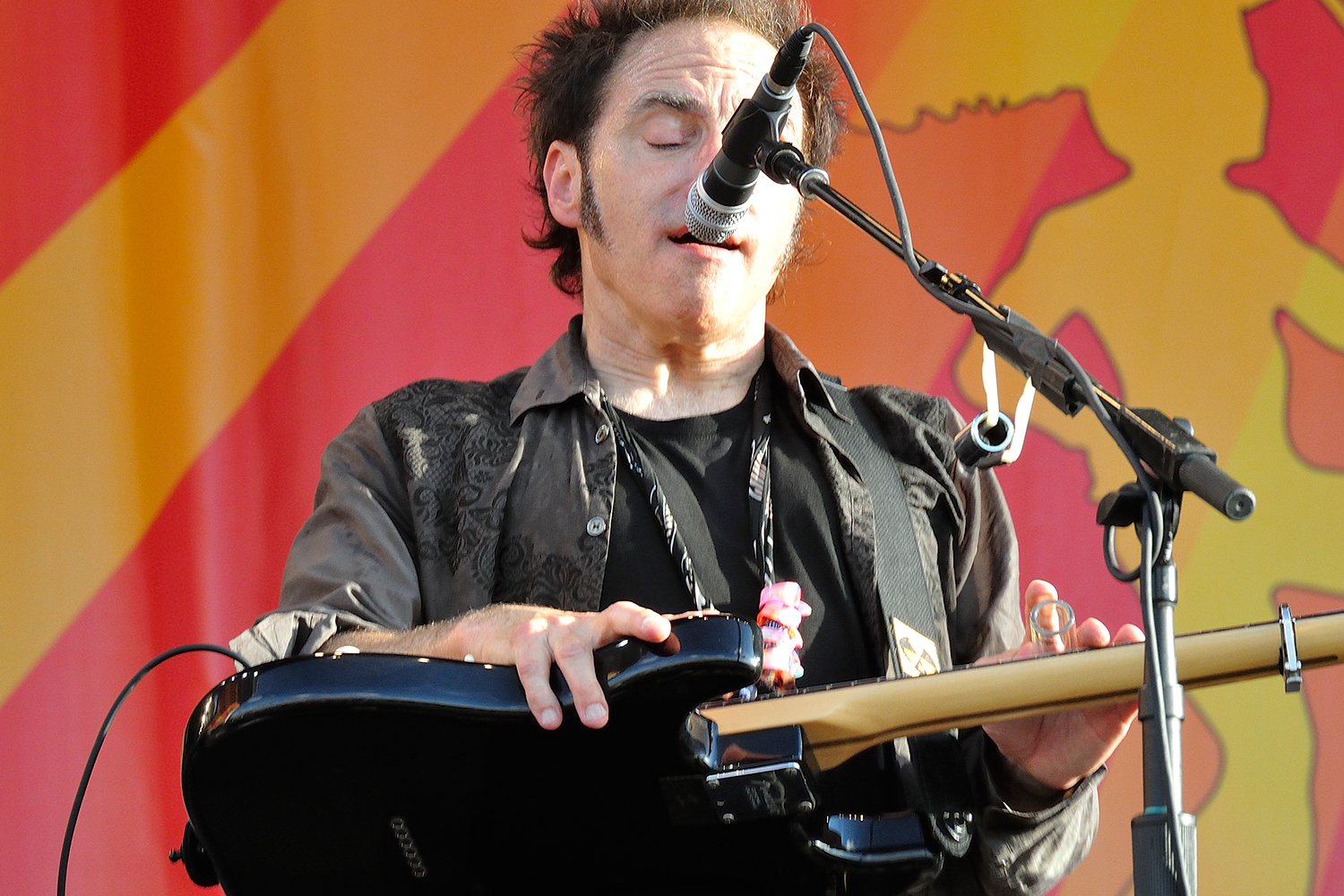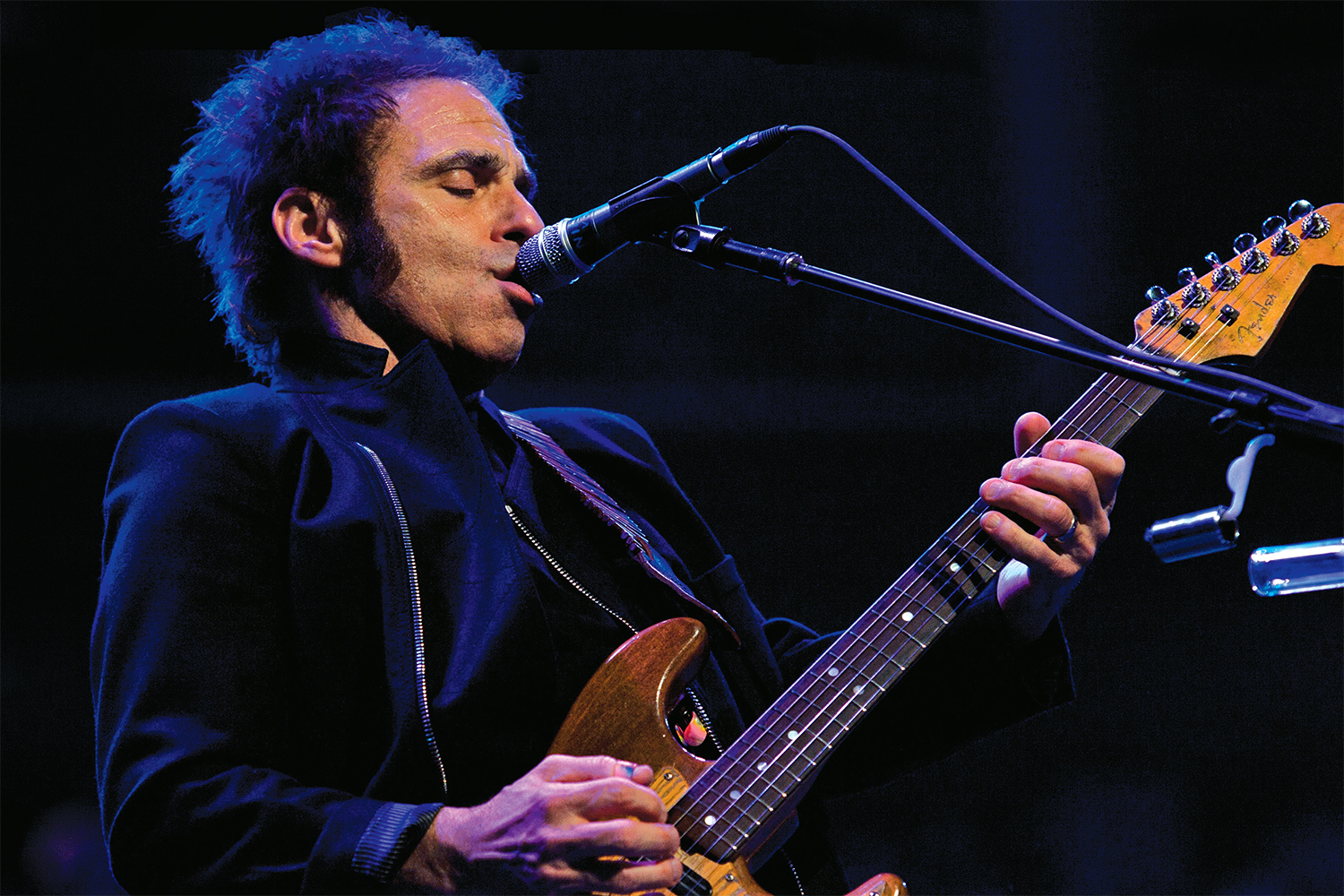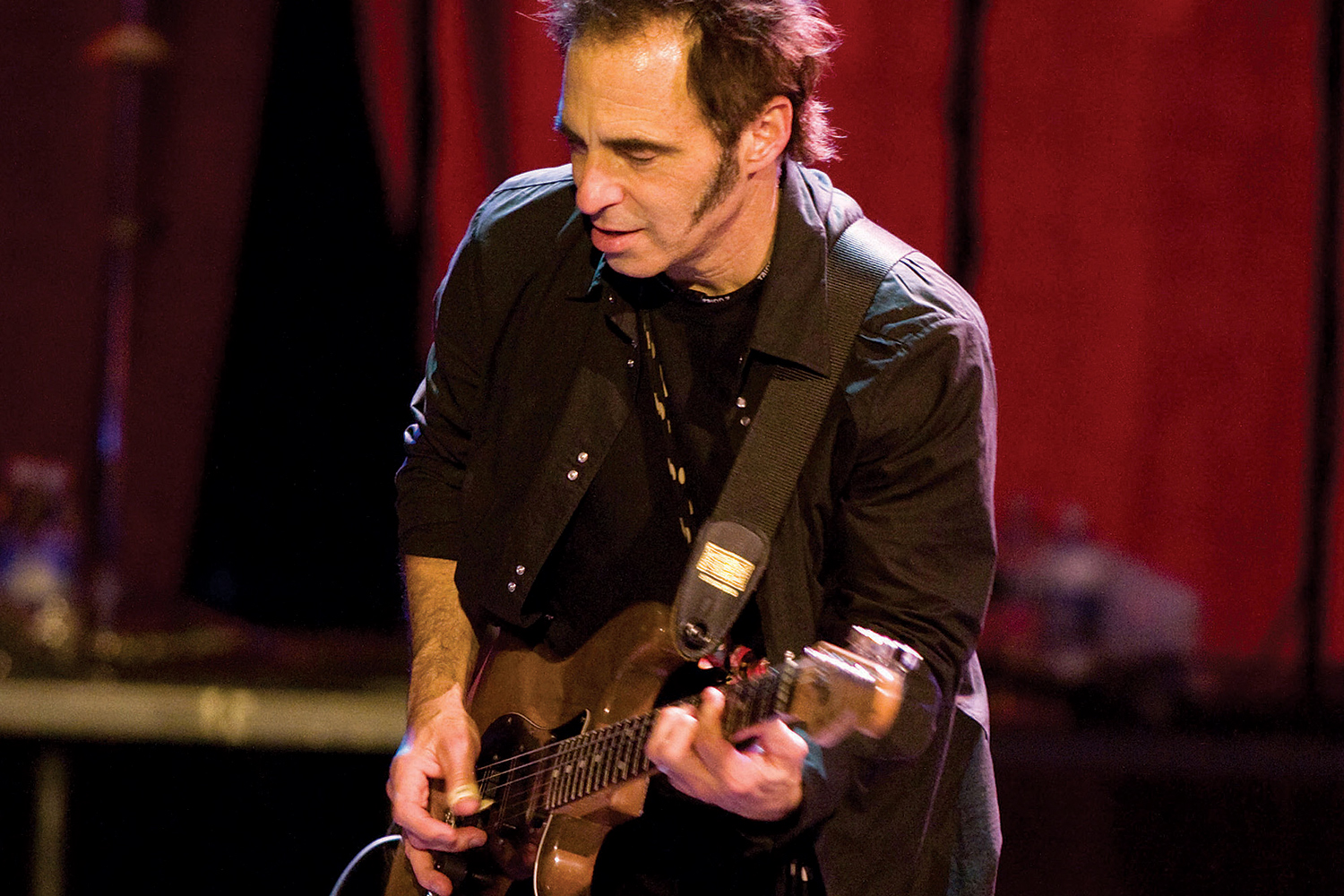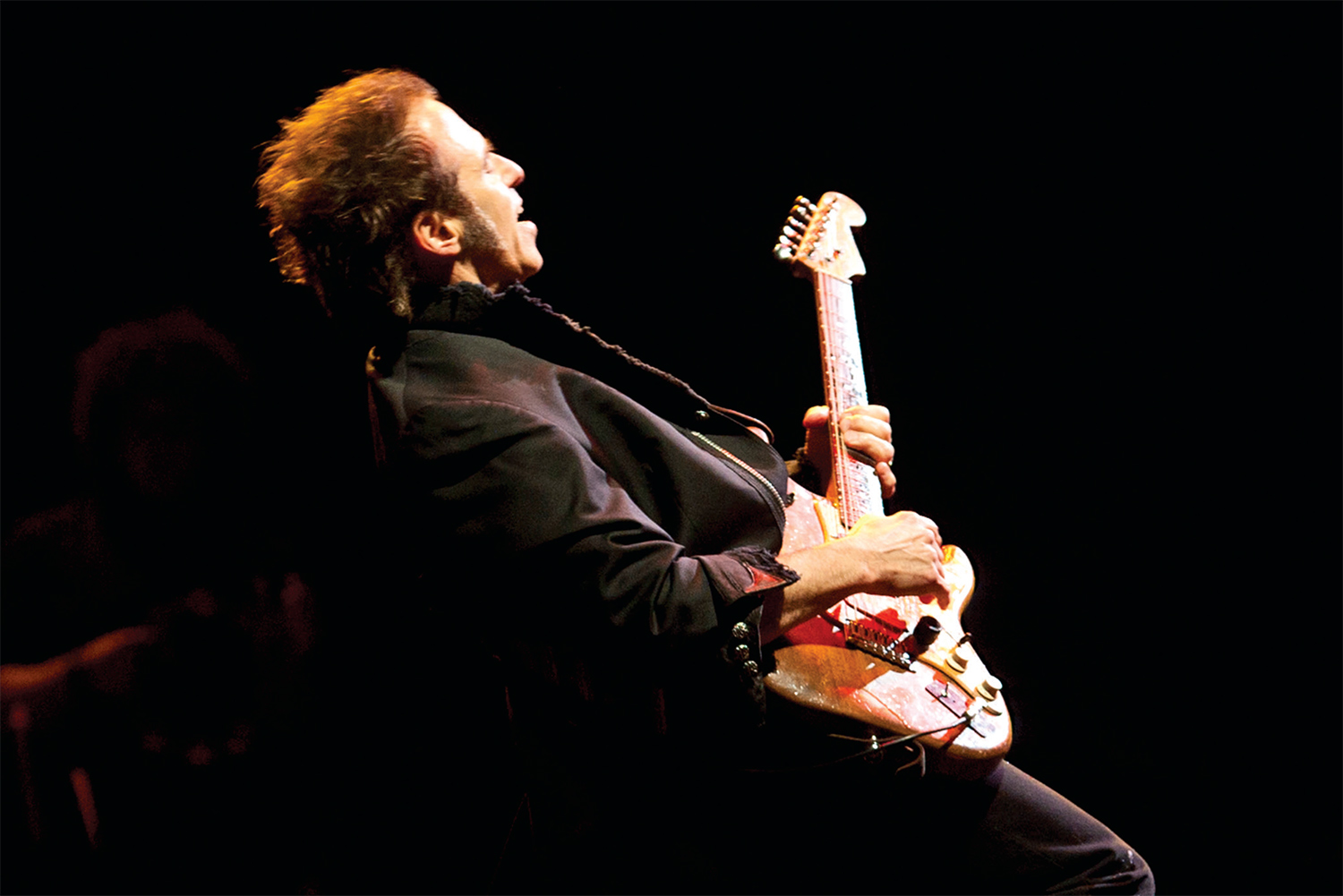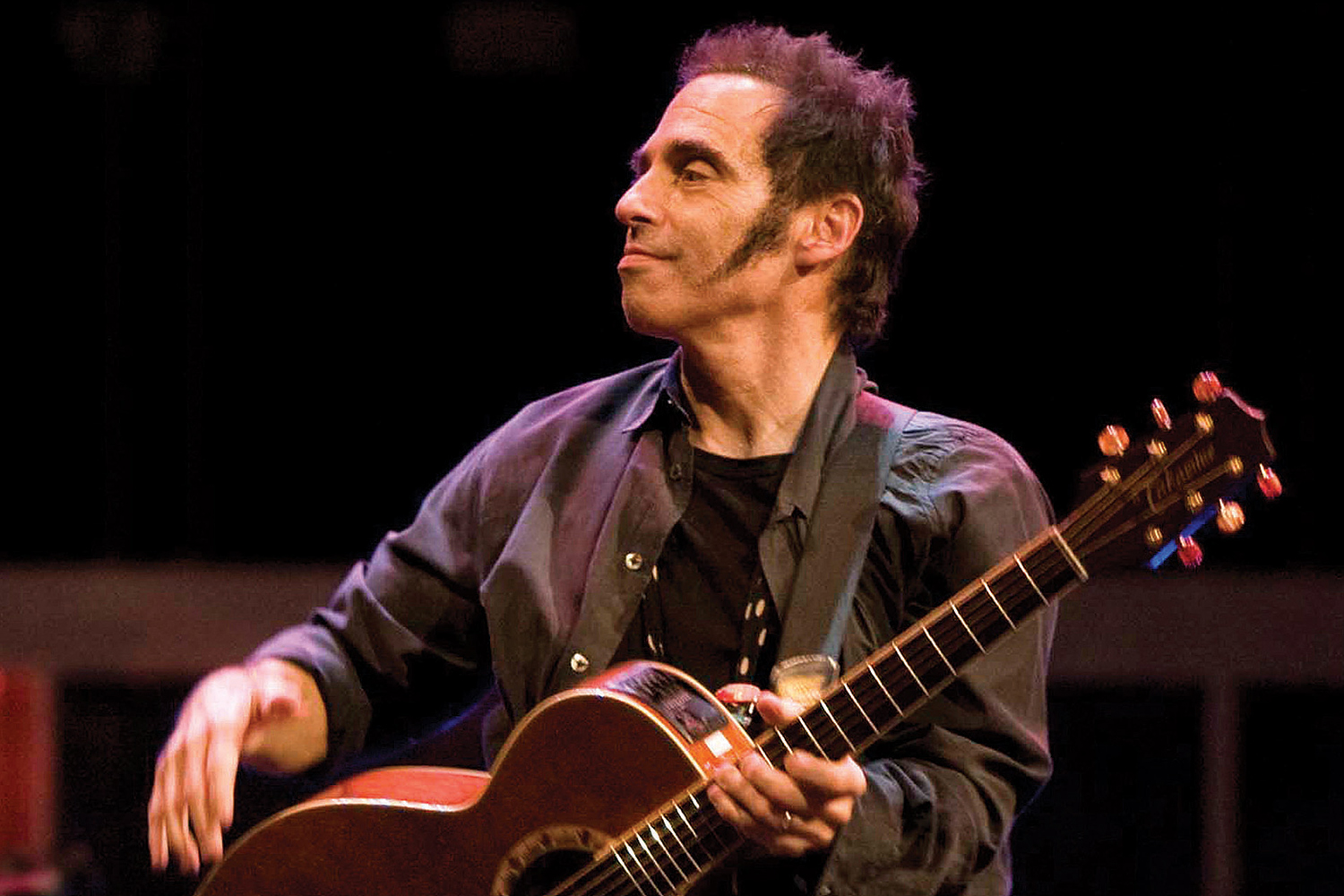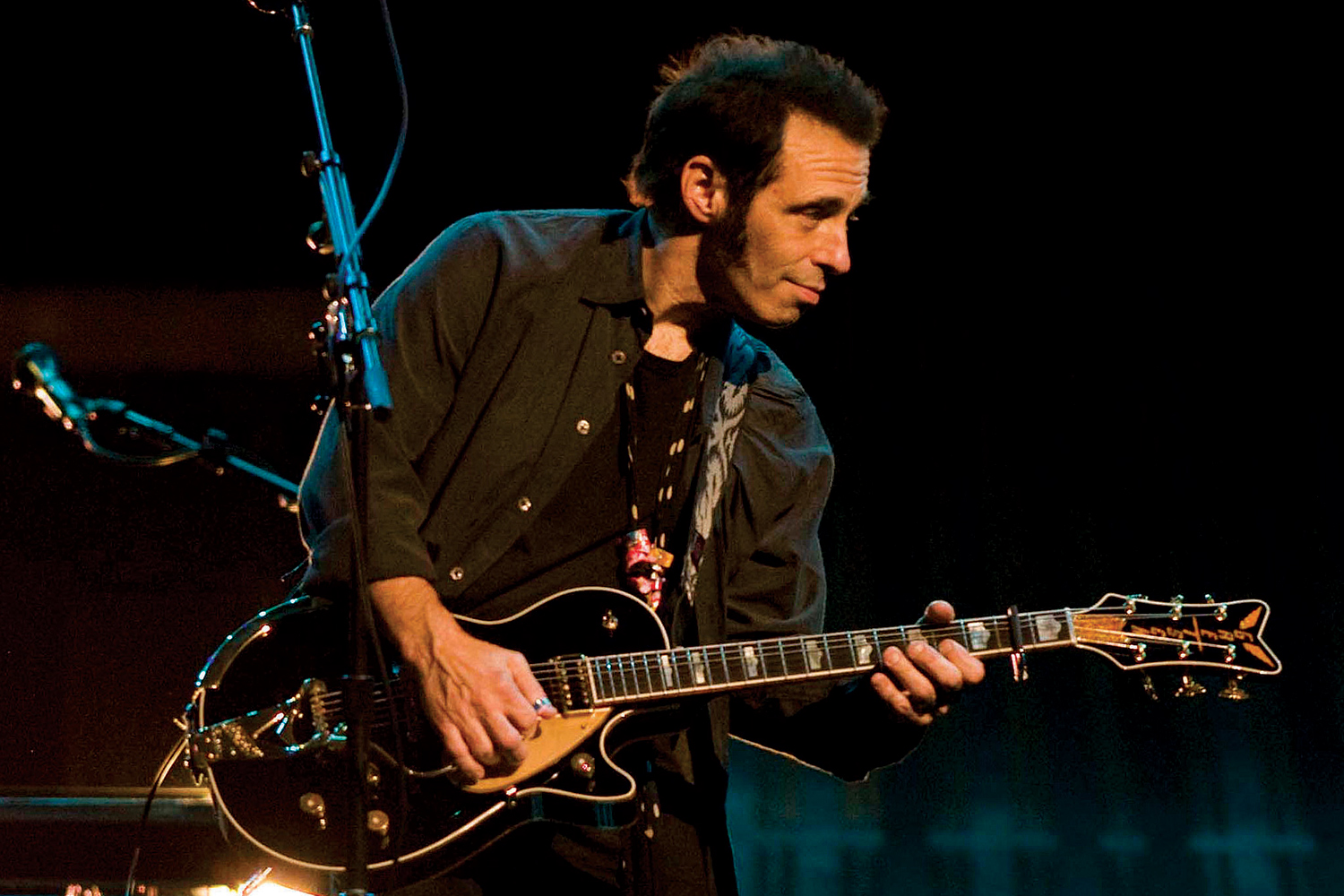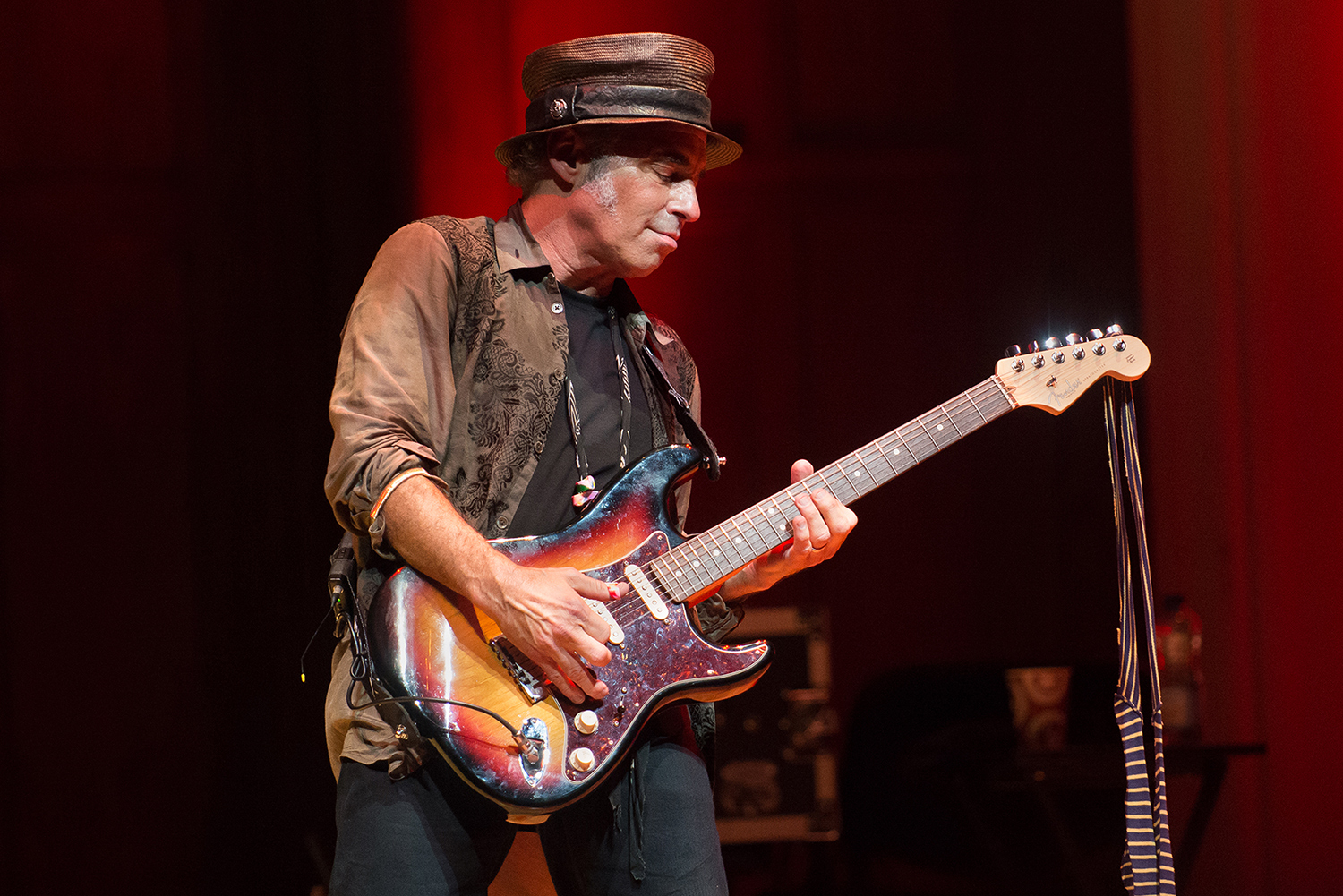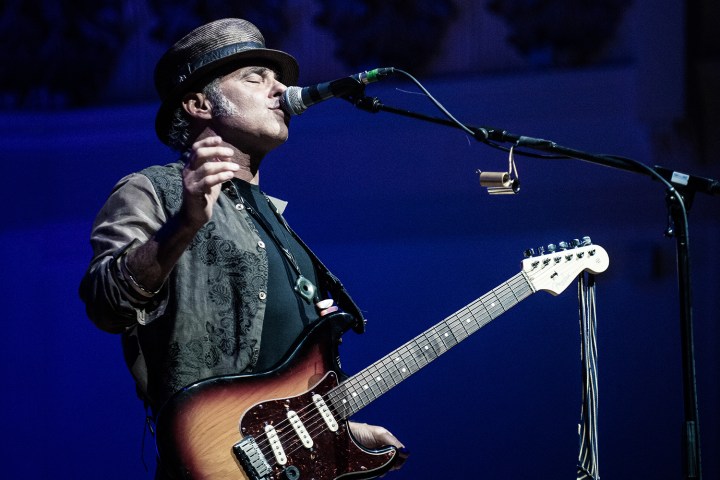
“The goal is to keep the access, and improve the quality.”
Sometimes your better half truly knows what’s best. Just ask guitar titan and noted onstage backflip specialist Nils Lofgren, whose wife Amy convinced him to record one of his sold-out solo dates in the U.K. last January.
“I was so focused on making the shift from E Street member to bandleader, dealing with winter, and doing good shows from night to night that I just didn’t have an overview of the show itself,” Lofgren admits. “Amy was the one who said, ‘Look, I’ve seen you for 10 years with Greg [Varlotta, who supports Nils onstage playing keyboards, guitar, trumpet, and tap-dance percussion], and I’ve never seen you better. You’ve gotta record these shows, please!’”

Good advice, Amy, because UK 2015 Face the Music Tour, out now on disc and download via Cattle Track Road Records, captures the pure essence of what makes solo Lofgren shows so riveting: the trumpet/acoustic guitar interplay on Walkin’ Nerve, the haunted mariachi vibe of Rusty Gun (a song from his Grin days), and the raw emotion and precision percussion of set closer Shine Silently.
It’s been a long road for Lofgren. He’s had to balance the demands of a solo career on both sides of the Pond alongside being lead guitarist for Bruce Springsteen and The E Street Band, which recently reunited for The River Tour to support the man’s massive The Ties That Bind – The River Collection box set.
“Last September marked 47 years on the road,” Lofgren told me. “Looking back on making my 10-disc Face the Music box set in 2014 and writing a 138-page story with Dave Marsh’s help as an editor — it just blew my mind. I’d forgotten what I’d done over those 47 years because I’m so focused on today and tomorrow. It was really a healthy stroll down memory lane for me.”
Before Nils headed off on tour with his other boss — Bruce Springsteen, that is — he called Digital Trends to discuss the live album, marrying digital options with sound quality goals, and why Springsteen’s 1980 masterpiece The River continues to hold sway. The man knows how to shine not-so-silently.
Digital Trends: I love the total you-are-there feel of this live album.
Nils Lofgren: Yeah, thank you. The goal was to have something available when people came up to our merch table and asked, “Can I have the show I just saw?” We can now say, “Yes, here it is. This is what it sounded like.”
There does seem to be a lot more of that going on now. Mark Knopfler makes his shows available for purchase via a USB stick you can order through his website.
I find that very brave. Mark’s one of my favorite guitar players by far. But that’s not something I’m ready for. I know it’s great for the fans if the artist can do it, but meanwhile, I’m glad that after 10 years of doing great shows with Greg, Amy got the idea to get it commemorated this way, and we got it done right.
So we have Face the Music Tour in CD and download options. Will there be a vinyl version?
You know, we’re talking about that. We did Old School (2011) on vinyl, and my old record Acoustic Live (1997) has come out on double vinyl. People actually ask for it at the merch table from Amy, who designed it.
We can also get this album on Spotify, where I like paying the premium so artists can get some money out of it. As a musician, what do you think about the streaming universe?
Music is a magical bowl of soul food for billions.
Obviously, anybody who bootlegs an artist’s work and they don’t get paid for it — that’s wrong to me. Trickle that down with what’s going on with streaming, and either the artist is getting their due, or they’re not. If they are, I’m open to any forms that share music. And if they’re not, it’s wrong.
I’m with you on that. Listening to something digitally — is that something that’s OK with you in this modern age?
I don’t know if “OK” is the right word. The access is great; the sound quality is not. My buddy Neil Young went through decades of hard work to help create Pono, which puts music out in the highest res possible. Hopefully, Neil started a trend towards fixing sound quality for digital music. Hats off to him for trying.
Agreed. I talked to Neil about it about a year ago myself, and I’m always ready to champion the high-res ideals of Pono, HDtracks, and Acoustic Sounds Super-HiRez. And given the nuances evident on this mostly acoustic record, an MP3 isn’t going to capture all of the details and subtleties when you play the harp or shift gears in a song like Too Many Miles.
No, you’re going to lose a lot. That’s just the nature of it. For a recent birthday, Amy gave me this incredible sound system with a turntable, speakers, and receiver. It took 10 months for her to get the receiver from one country, the turntable from another, and the speakers from a third country. I enjoy it. I’m just figuring out how to clean the thing and put it on without screwing it up. (laughs) It’s been a lifesaver for me.
We’ve got quite a collection of vinyl that I’ve saved through the years, and we’re now picking up some new vinyl too, like Lucinda Williams’ triple-vinyl Down Where the Spirit Meets the Bone (2014), Chissie Hynde’s Stockholm (2014), and some Willie Nelson records.
After running around on the road desperate to tune in stations or listening to MP3s, it’s nice to actually get back home and sit in your living room and play a side of a record front to back, and give yourself permission to calm down a little bit, listen to it, and enjoy it.
I like the way your phrase it — “permission to calm down.” I actually call my own sessions “appointment listening.” The phone gets put away and I don’t do anything else; I just listen to the music.
I remember as a kid, there was no cell phone and no access to the planet 24/7, so it wasn’t unusual to turn the lights down in the rec room in the basement in my parents’ house and listen to Side A, flip it over, listen to Side B, and then go back and do my homework.
Bruce finally infused the sizzle and energy of his lives shows into his recordings.
Look, the access is great. When I’m on the road and I’m missing my family, to go in and punch up a song that moved you 40 years ago and instantly have it in your hand — even if the sound quality is poor, the emotional content is still there, and I still get the emotional hit off it.
Although the MP3s don’t sound too good, it is a nice option to have it all in your hand at will, even if it’s low-level. During a lot of my touring, even if I’m in a dingy dressing room, I’ll just put a playlist on and it perks me up. It reminds me, “Yeah, you’re away from home, but 400 people are coming to hear you sing your songs tonight. You better stay with it.” And that just puts me right there.
I think of a song of yours like Shine Silently as being the perfect example of connecting emotionally with the music. There’s a certain quality inherent in that song that will always get you as a listener.
Yeah, thank you. That’s the magic of music. I did an album called Sacred Weapon (2006), and that’s what music remains for me, and billions of people. All you need to do is to love music. It’s a magical bowl of soul food for billions. And one of the advantages of digital is you can dial in an old Howlin’ Wolf or Muddy Waters collection that might have been lost if it wasn’t for that format. So now, the goal is to keep the access, and improve the quality. We’re talking about access to a sacred weapon called music that will save your life.
In December, I saw you back with Bruce Springsteen and the E Street Band on Saturday Night Live playing songs from The River, which is my favorite Bruce record. And now you get to play it live from beginning to end on the current River Tour run. From the very beginning, I was a Point Blank guy. I used to pick the needle up after it ended and put it right back at the beginning to hear it again and again.
I love Bruce and the band. I bought a ticket to go see him at the Sports Arena in Los Angeles in [October] 1980. I’d been buying tickets to see him play since the mid-’70s.
What we do evolves through the rehearsals and the shows. It evolves on the previous night of every tour. We’re always changing stuff and changing arrangements. The first time we played the entire River album in New York City [at Madison Square Garden on November 8, 2009], it was beautiful.
When did you first hear The River?
If the artists get their due, I’m open to any forms that share music.
I was living in L.A., and I was running into Bruce a lot out there. One day he said, “Hey, we just finished mixing an album called The River. It’s a double album. You want to come hear the mixes with me?” He took me over to the studio and put me down in the middle of a pair of great speakers. I listened to both records back to back, and I remember it vividly.
It just struck me on that album how they finally infused the sizzle and energy of their live performances into their recordings. It’s still one of their great albums, and I’m thrilled that this box set [The Ties That Bind] is out with all this new music on it. There are some songs from those sessions that we’ll get to play too.
Do you have any particular favorite tracks from that album? I know you’ll be playing them all, but…
I do love them all, certainly, but like you said, Point Blank is one of the most beautiful, haunting songs to play. I get to do the acoustic part. And then something we’ve maybe only played two or three times over the years, Wreck on the Highway. I did my own version of it for a charity project that’s now on my box set. [Nils’ take on Wreck was originally from 1997’s One Step Up/Two Steps Back: The Songs of Bruce Springsteen.]
And, of course, I love the straight beer-barrel songs like Ramrod, one of the great classic rock songs of the time. And The Ties That Bind. They’re all fabulous songs. There’s not a bad song in the bunch. I’m looking forward to playing all of it.
